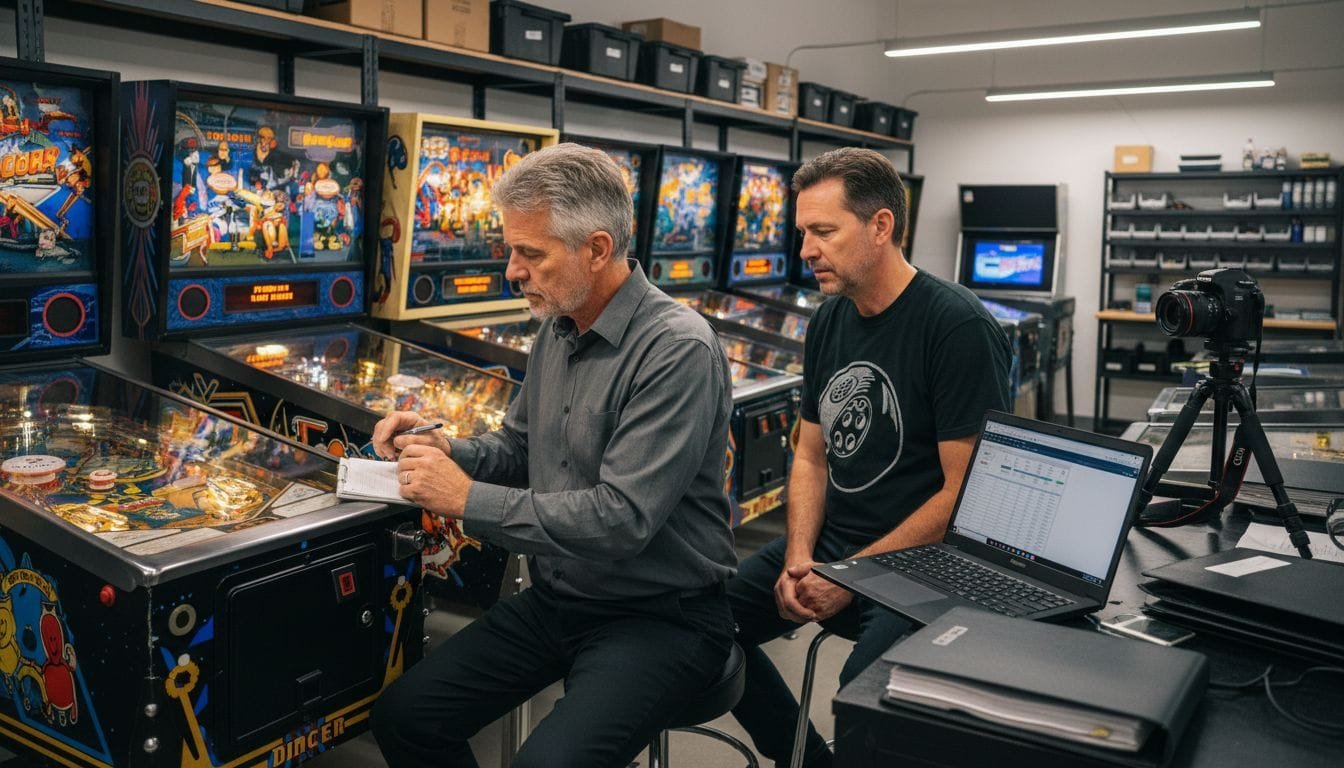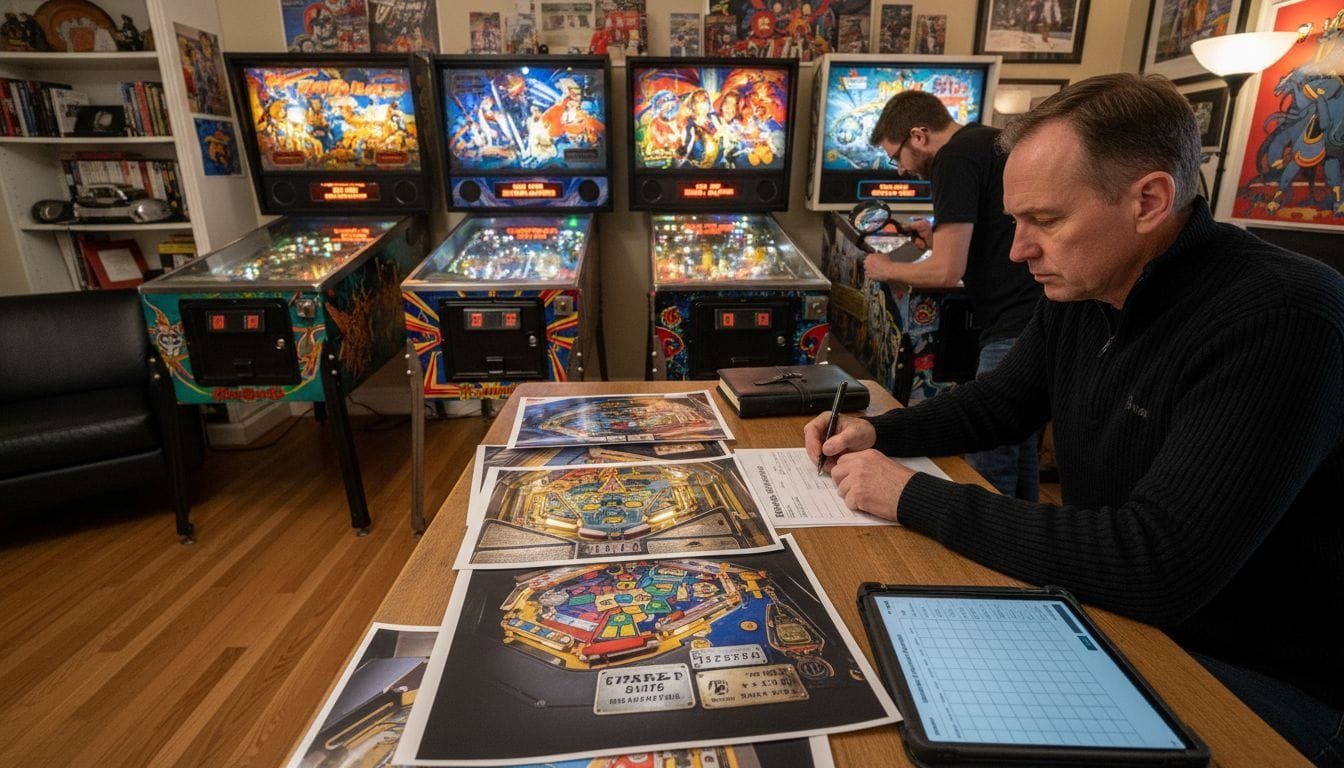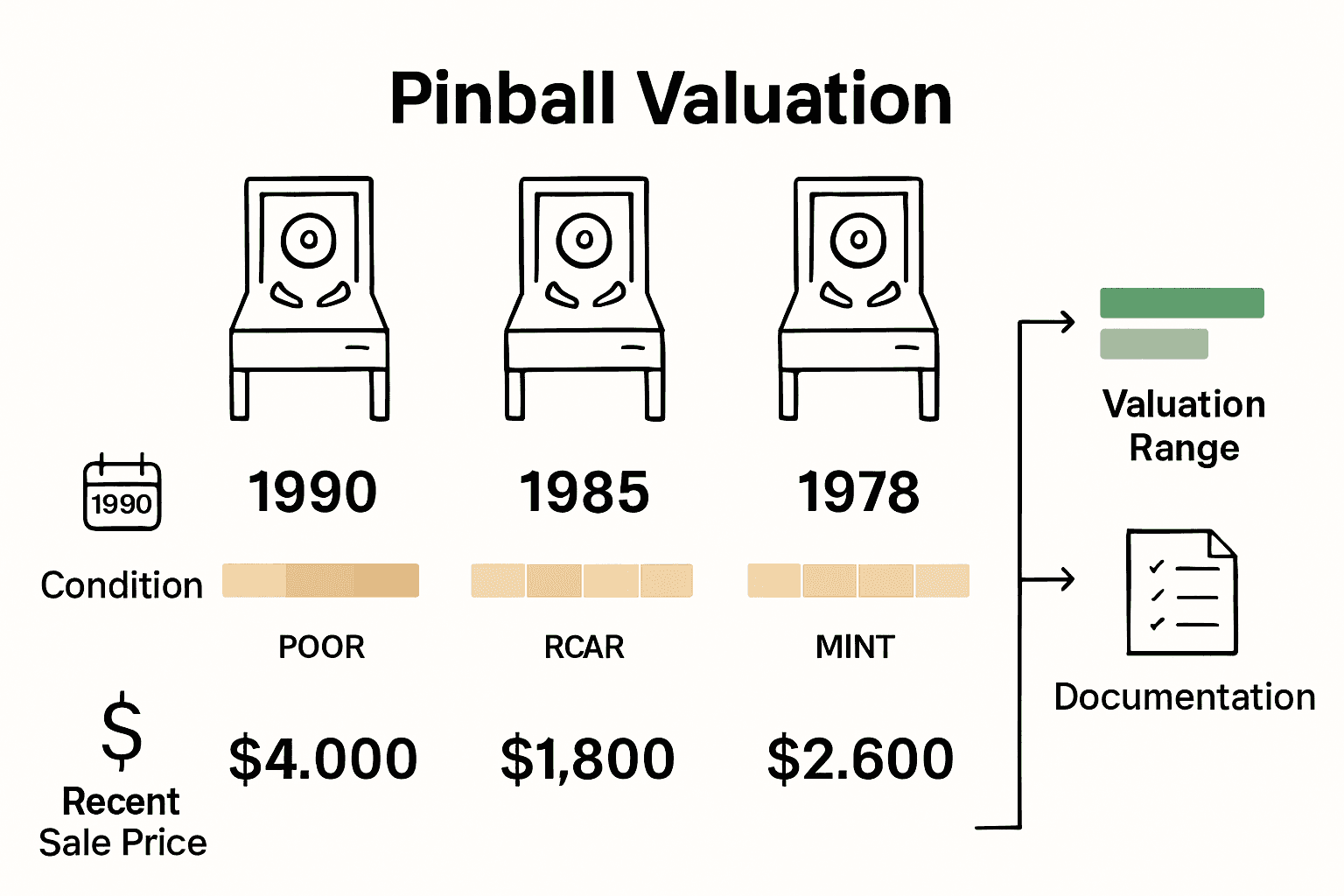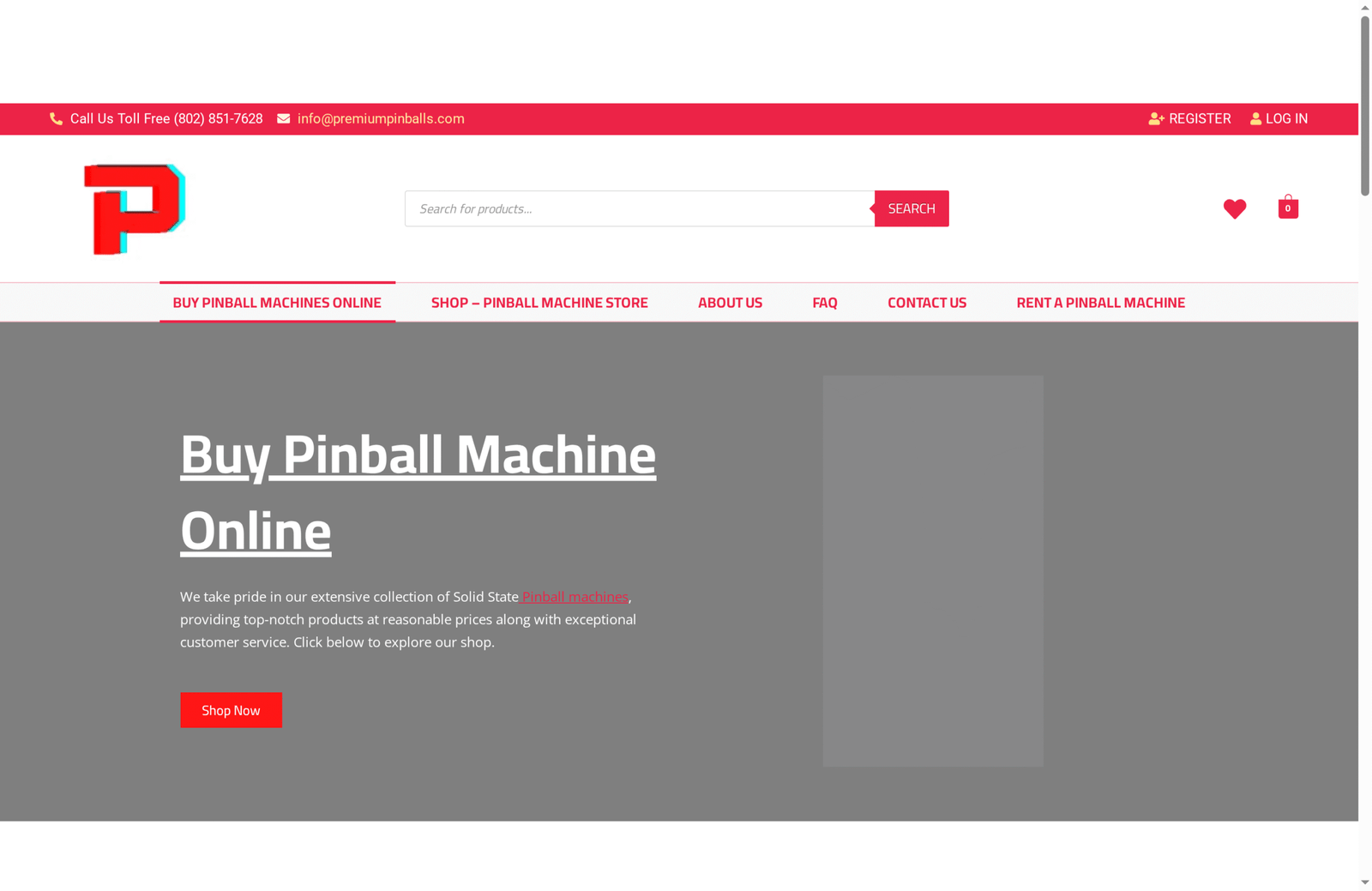Collectible Pinball Valuation Guide: Accurately Assess Value

Some vintage pinball machines have sold for over $15,000, proving these classics can be serious assets. For collectors and enthusiasts, figuring out what a machine is truly worth can feel complex. Accurate valuation protects your investment and guides smart buying and selling decisions. This guide offers straightforward steps to help you gather key details, research market trends, assess condition, and access expert tools so you know exactly where your collectible pinball stands.
Table of Contents
- Step 1: Gather Essential Pinball Information
- Step 2: Research Market Demand And Trends
- Step 3: Inspect Condition And Originality
- Step 4: Compare Sales And Price Data
- Step 5: Verify And Document Your Valuation
Quick Summary
| Key Point | Explanation |
|---|---|
| 1. Collect detailed data first | Identify model, year, and serial number using databases for accurate valuation. |
| 2. Research market trends comprehensively | Explore various sales platforms and engage with collector communities to understand demand and pricing. |
| 3. Assess condition meticulously | Use a standardized grading scale; inspect playfield, backglass, and components to determine overall state. |
| 4. Compare multiple pricing sources | Gather prices from different platforms to establish a realistic price range for your pinball machine. |
| 5. Document findings thoroughly | Compile images, reports, and comparable sales to support your valuation and prepare for potential buyers or appraisers. |
Step 1: Gather essential pinball information
Accurately assessing the value of a collectible pinball machine requires thorough research and detailed information gathering. Your initial goal is to collect comprehensive data about the specific machine you want to evaluate, which will serve as the foundation for determining its market worth.
Begin by identifying the precise model and production year of your pinball machine. According to sebastiancharles.com, the most reliable method is to locate and reference the machine’s serial number against established pinball databases like IPDB.org (Internet Pinball Database). This critical step helps you confirm the exact specifications and origin of your machine.
For serious collectors and investors, obtaining a comprehensive price guide can provide invaluable insights. The Pinball Price Guide, Ninth Edition offers an extensive reference covering over 2000 collectible games produced in the U.S. market from 1931 to 2012. This guide breaks down pricing into three distinct condition classes based on the backglass, playfield, and cabinet state.
Pro tip: When gathering information, document everything meticulously. Take high resolution photographs from multiple angles, note any unique features or modifications, and record the machine’s serial number. These details will prove crucial during the valuation process and can significantly impact the potential resale value of your pinball machine.

In the next step, we’ll dive into analyzing the specific condition factors that directly influence a pinball machine’s market value.
Step 2: Research market demand and trends
Understanding the current market dynamics is crucial for accurately valuing a collectible pinball machine. Your goal in this step is to develop a comprehensive view of pricing trends and collector interest that will inform your valuation strategy.
According to sebastiancharles.com, pinball machine values are highly dynamic and can fluctuate significantly based on collector demand. Some models appreciate in value over time, while others might depreciate. To get a precise pulse on current market conditions, you need to explore multiple research channels. Start by examining recent sales data on platforms like eBay and Pinside.com, which offer real world transaction insights. Specialized auction houses such as SebastianCharles Auctions also provide valuable pricing information.
Expand your research by engaging with local pinball dealer networks and online collector forums. These communities often share insider knowledge about rare models, emerging trends, and potential investment opportunities. Pay special attention to limited edition machines, vintage games from iconic manufacturers, and models with unique artwork or historical significance.
The more comprehensive your market research, the more accurately you can assess your pinball machine’s true value.
Pro tip: Document your research findings meticulously. Create a spreadsheet tracking recent sale prices, auction results, and expert opinions. This systematic approach will help you develop a nuanced understanding of market trends and provide concrete evidence to support your valuation.
In the next step, we will focus on evaluating the specific condition factors that play a critical role in determining a pinball machine’s market worth.
Step 3: Inspect condition and originality
Carefully assessing the condition of a pinball machine is a critical step in determining its true market value. Your goal is to conduct a comprehensive and objective evaluation that considers every aspect of the machine’s physical state and originality.
According to californiapinball.com, many collectors use a 1-10 scale for grading condition. However, it is crucial to understand that most sellers tend to overestimate their machine’s condition. As pinside.com suggests, a standardized grading system provides a more objective approach. This system ranges from 10 (new or mint condition) to 6 (very good used condition), offering a nuanced way to evaluate a pinball machine‘s overall state.
When inspecting the machine, focus on several key areas: the backglass, playfield, cabinet, electronics, and mechanical components. Check for original paint, artwork integrity, wear patterns, and any signs of restoration or replacement parts. Pay special attention to the condition of delicate elements like the backglass artwork and playfield surface, as these significantly impact the machine’s value. Look for original components and avoid machines with extensive non original modifications.
Pro tip: Use high quality lighting and take detailed close up photographs during your inspection. Document every scratch, touch up, or modification. These images will serve as crucial evidence when determining the machine’s condition and can be invaluable for potential buyers or appraisers.
In the next step, we will explore how to translate your condition assessment into a precise market valuation.
Step 4: Compare sales and price data
Comparing recent sales and market pricing is crucial for establishing an accurate valuation of your collectible pinball machine. Your objective in this step is to gather comprehensive pricing data from multiple reliable sources to develop a nuanced understanding of your machine’s potential market value.
According to Barnes and Noble, the Pinball Price Guide offers an extensive reference covering over 2000 collectible games produced in the U.S. market from 1931 to 2012. The guide strategically breaks down pricing into three distinct condition classes based on the backglass, playfield, and cabinet state. This approach provides a structured method for comparing your machine against established market benchmarks.
Expand your research beyond a single reference by cross referencing multiple platforms. Examine recent sales data from online marketplaces like eBay, specialized pinball collector forums, auction sites, and dedicated pinball sales websites. Pay close attention to machines with similar model years, condition ratings, and unique characteristics. Create a spreadsheet tracking sale prices, noting variations based on condition, rarity, and specific model details.
 This comprehensive approach will help you establish a more accurate price range for your specific pinball machine.
This comprehensive approach will help you establish a more accurate price range for your specific pinball machine.
Pro tip: Do not rely solely on asking prices. Focus on actual completed sales prices, which provide a more realistic representation of true market value. Some machines might be listed at high prices but never actually sell at those rates.
In the next step, we will help you synthesize all the gathered information to determine a final, well researched valuation for your collectible pinball machine.
Step 5: Verify and document your valuation
Validating your pinball machine’s valuation requires a systematic and thorough approach that combines multiple expert sources and comprehensive documentation. Your goal is to create an ironclad assessment that stands up to scrutiny from collectors, dealers, and potential buyers.
According to sebastiancharles.com, checking current market value involves exploring multiple channels including recent sales on eBay, Pinside.com, specialized auction houses, and collector forums. Barnes and Noble’s Pinball Price Guide provides an additional layer of validation by offering comprehensive pricing data for games produced between 1931 and 2012, which breaks down values across three distinct condition classes.
To strengthen your valuation, seek confirmation from multiple sources. Consult with professional pinball appraisers, attend collector conventions, and engage with online pinball enthusiast communities. Request formal written appraisals from recognized experts who can provide an authoritative assessment. Create a comprehensive documentation package that includes high resolution photographs, detailed condition reports, original serial number verification, provenance information, and a compiled spreadsheet of comparable sales data.
Pro tip: Consider obtaining a professional written appraisal for machines valued over $5000. This document can be crucial for insurance purposes, potential sales, and establishing the machine’s legitimate market value.
With your valuation now thoroughly verified and documented, you are prepared to make informed decisions about your collectible pinball machine.
Unlock the True Value of Your Pinball Machine Today
Determining the accurate worth of your collectible pinball machine can feel overwhelming with all the details about condition, market trends, and originality to consider. If you want to move beyond just researching and start experiencing top-quality machines firsthand, Premium Pinballs LLC offers a wide selection of refurbished, used, and new premium pinball machines that meet high standards and come ready to enjoy.

Explore our Uncategorized – Pinball Machines for Sale category to discover iconic models like Addams Family and Ghostbusters that have been carefully maintained or restored. Acting now means securing the best available machine with reliable warranty and customer support. Don’t let uncertainty slow you down — visit Premium Pinballs LLC to find the perfect pinball machine and turn your passion into a stunning, playable investment.
Frequently Asked Questions
How do I identify the model and production year of my pinball machine?
To identify the model and production year, locate the machine’s serial number and cross-reference it with established pinball databases like IPDB.org. Make this a priority as it ensures accurate specifications for your valuation.
What steps should I take to assess the condition of my collectible pinball machine?
Conduct a thorough inspection using a standardized grading system that ranges from 10 (mint condition) to lower grades for used machines. Focus on areas like the backglass, playfield, and cabinet, and document everything with high-quality images.
How can I research recent sales data for my pinball machine?
Explore recent sales on online platforms like eBay and collector forums to get insights into current pricing trends. Track this information systematically in a spreadsheet to understand the market for your specific machine.
What methods can I use to verify the market value of my pinball machine?
Verify the market value by checking multiple sales channels, consulting with pinball appraisers, and gathering written appraisals if necessary for higher-value machines. Create a documentation package that includes sale data and condition reports to substantiate your valuation.
Why is it important to document the condition and valuation of my pinball machine?
Documenting the condition and valuation helps establish credibility when selling or insuring your machine. Create detailed records including photographs and sales comparables to support your assessment and ensure potential buyers have confidence in your valuation.
